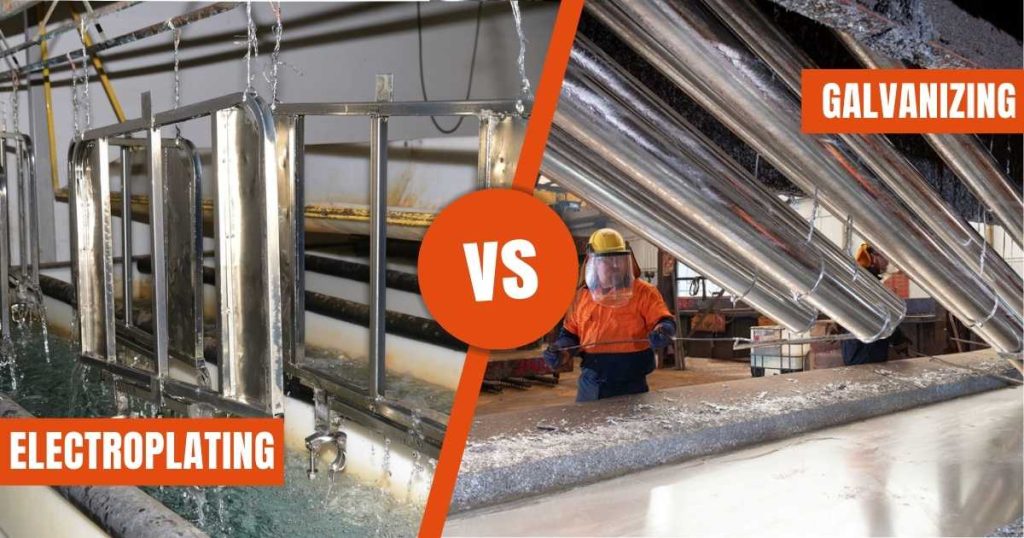Are you in a loop to configure the best way to protect metal from corrosion through the coating method? If you are confused about whether to go with electroplating or hot-dip galvanization, then you clicked the right source. Before getting deeper into let’s have a look at the overview, so both these coating techniques apply a coating of zinc to a metal, however, there are a lot of differences in the process, durability, and cost. At this point, you may have questions like which method provides long-term protection, or which is more effective even in a harsh environment.
No matter which sector you belong to, the right selection of a zinc coating is always important to maximize the lifespan and the maintenance cost of the product. Let’s take you further to find the best zinc coating in Malaysia to meet your needs!
What is Electroplating?
Electroplating is one of the coating processes, in which a thin layer of zinc is applied on the surface of the metal through electrochemical reactions. Where an electric current is also applied to transfer the solution throughout the metal’s surface to create a thin and smooth layer of zinc coating.
Benefits of Electroplating
- Aesthetic Appeal: The electroplated zinc coating shares a smooth and shiny finish that allows a decorative look.
- Corrosion Resistance: The thin layer of electroplated zinc coating is much more effective in protecting the metal from corrosion; in fact, it is more valuable than any other thick coating layer.
- Cost-Effective: Electroplating is one of the pocket-friendly coating methods. Initially, this is what makes this perfect for small items and lightweight products, and appliances.
Common Applications of Electroplating
- The electroplating coating technique is perfect for the automotive parts of the systems, which include bumpers, trims, and similar components.
- Zinc coating under electrochemical reactions is good for processing electronics and electrical components.
- This coating is ideal to small hardwares too, this includes screws, fasteners, etc.
What is Hot-Dip Galvanizing?
Here is all about hot-dip galvanizing, which is also a coating method, where iron or steel is dipped into a molten zinc bath to create a thick and uniform coating of zinc layer. During this, a high temperature is maintained to allow the zinc to bond directly to the metal to form a protective and thicker layer than the final layer from the electroplating coating.
Benefits of Hot-Dip Galvanizing
- Superior Corrosion Protection: This coating method shares a long-term protection even it is an intense industrial zone or harsh environmental conditions.
- Durability: The zinc coating by the hot-dip galvanization process is highly resistant to abrasion and damage. Its properties ensure a lasting protection for decades.
- Maintenance-Free: After the hot-dip galvanization process, there is no need to invest in regular maintenance and touch-ups. This makes the solution cost-effective in the long run.
Common Applications of Hot-Dip Galvanizing
- Hot-dip galvanization is in demand for construction materials such as steel beams, rebar, etc.
- This coating method is also preferred to protect highway guardrails and fencing to extend their lifespan.
- Industrial equipment is preferred to be protected through the hot-dip galvanizing approach.
Electroplating vs Hot-Dip Galvanizing: A Comparison
Thickness and Durability:
- Electroplating: The layer via zinc coating is much thinner than the hot-dip coating technique. Here, the layer ranges from a few small microns to 25 microns, which comes with limited durability. All its properties make it ideal for metals is operate under a heavy physical stress.
- Hot-Dip Galvanizing: On the other hand, the zinc coating through the hot-dip galvanizing approach is much thicker than the electroplating zinc layer. Where it ranges between 50 to 85 microns, that’s why this layer stays longer for decades, even in extremely harsh conditions.
Corrosion Resistance
- Electroplating: The Electroplating coating technique shares a moderate level of corrosion resistance; however, it can be easily destroyed in case of any wear, abrasion, or chemicals. Which is why it is more suitable for applications in an indoor space.
- Hot-Dip Galvanizing: This coating method provides a superior corrosion resistance with a thick layer of zinc coating. That makes the outcomes ideal for outdoor spaces in a harsh environmental and industrial setting.
Cost-Effectiveness
Electroplating: Initially, the cost is completely affordable to apply the zinc coating via the electroplating method. However, this thin layer may wear out faster, so to prevent this, one must need to make frequent investments in maintenance.
Hot-Dip Galvanizing: This is truly a higher upfront cost, but you will save more on maintenance. Which results in long-term savings.
Aesthetic Appeal
Electroplating: With this method, you will achieve a smooth, shiny, and polished finish and make the part decorative and appealing.
Hot-Dip Galvanizing: This process is something that prioritizes durability rather than appeal and aesthetics. Thus, it is ideal for heavy-duty and functional appliances.
Which Coating Method is Right for You?
Let’s summarize the guide for you, so that you can get out of the loop to choose the best one between electroplating and the hot-dip galvanizing process. If you are well-prepared to make the selection, then scan your project requirements first, and look into what you should prioritize at first to deliver satisfactory outcomes to your client. If you can go more effectively with the long-lasting approach with minimal maintenance, then choose the hot-dip galvanising approach. On the other hand, electrolating is perfect if you look for aesthetics inside doors. However, if you are still in a dilemma, then VgSteel is one of the leading platforms to take you out of this loop.
Do you want to install the qualitative coating in your space? Contact VgSteel’s experts at 03-5614 3102, or Email: vgironsales9@gmail.com, and ensure the best protection through the zinc coating in Malaysia!

